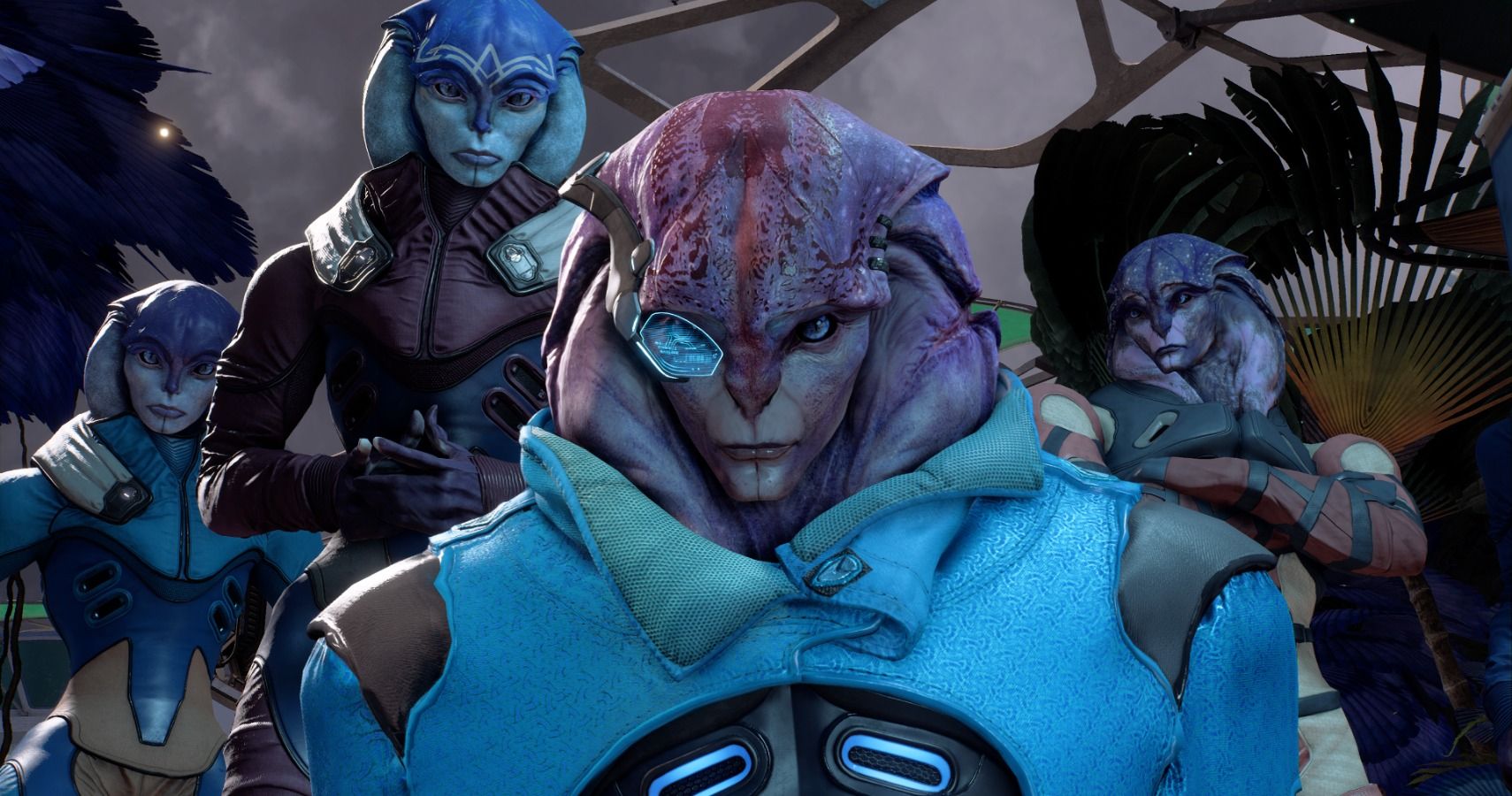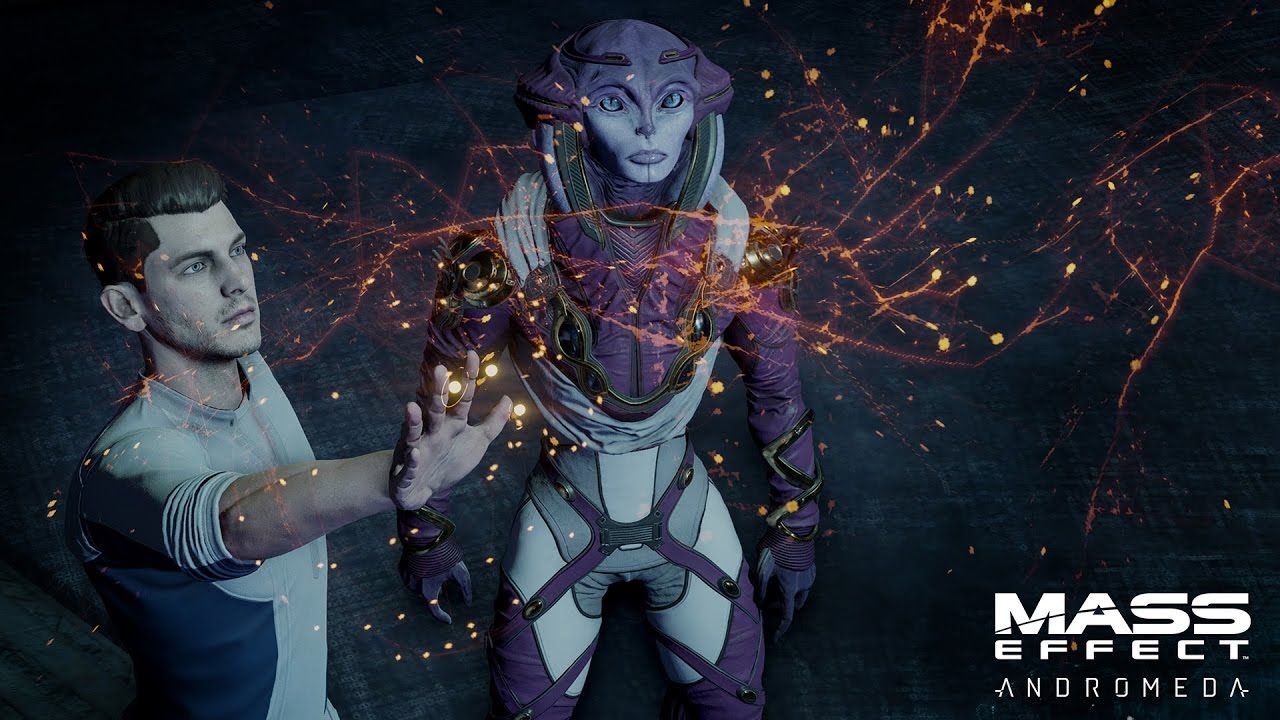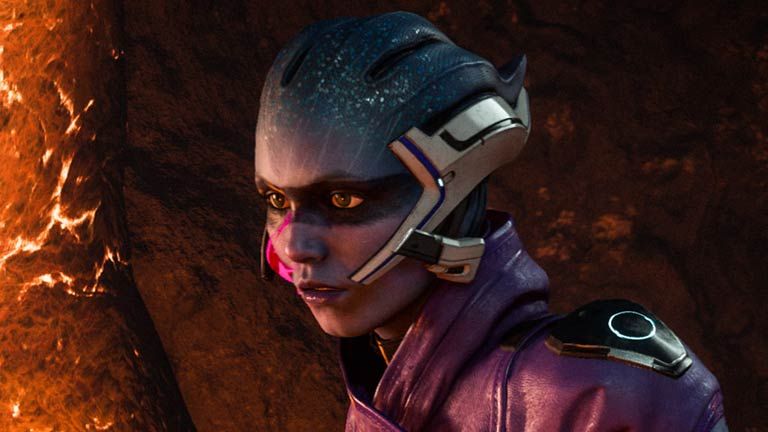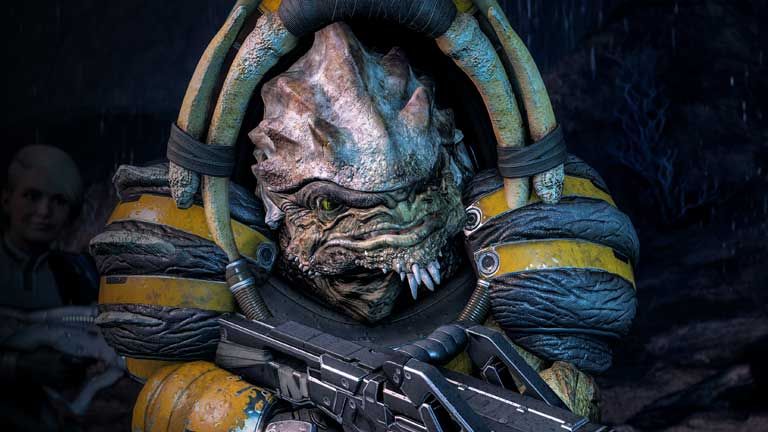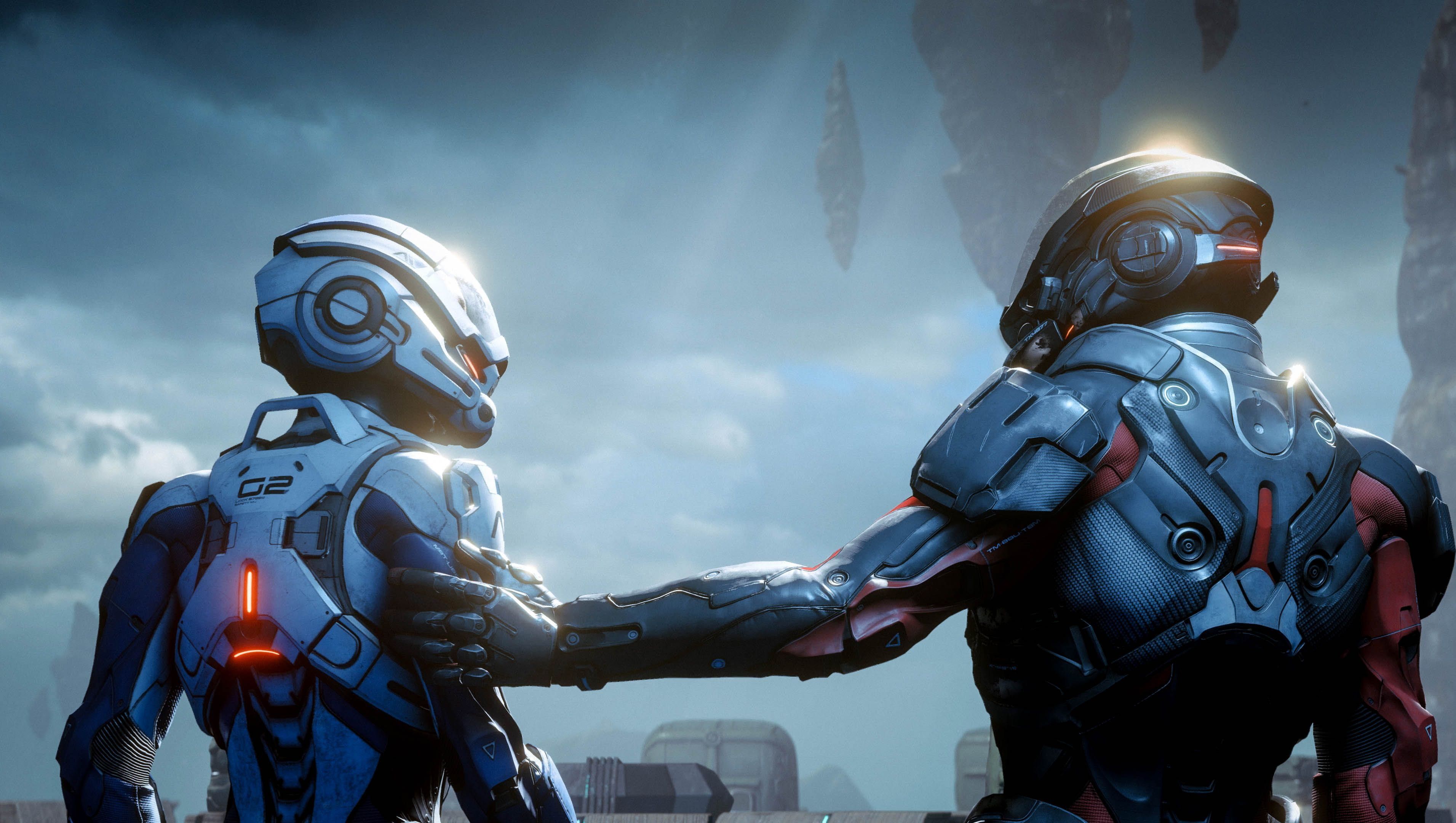One of the most magnificent things about space is its inherent unknowability. In Mass Effect, the Milky Way is so immensely large that it uses both faster-than-light travel and jump gates - most sci-fi generally opts for one or the other - just to facilitate the traversal of a single galaxy. And so, the promise of embarking on a mission to a brand new galaxy, Andromeda, seemed to offer boundless possibilities.
In the end, not only were a number of Milky Way aliens missing from the Andromeda Initiative - this vast, unexplored galaxy only appeared to contain two new species (and they’re both essentially the same species). Well, three if you include the Remnant, who are just sort of weird robots.
As it turns out, this wasn’t always the case. After speaking to various developers who worked on Andromeda - some of whom were there at the beginning, others who saw it through to the end - I’ve learned quite a bit about what happened here. First of all, there were several more species designed for this galaxy. One writer lists having proposed “five or six” new alien types, while another states that the ones BioWare opted for in the end were specifically chosen for being in “cosplay-safe” territory. Another dev mentions that an entire system was constructed just to facilitate communication between species who were indigenous to Andromeda and those who had arrived from the Milky Way.
The “species who were indigenous to Andromeda” part is important, given that there were also different ideas for how to handle first contact - making the Pathfinder a violent colonist who shoots first and asks questions later wasn’t something that was set in stone from the get-go.
“I think it was a project that couldn't have possibly lived up to expectations,” Neil Pollner tells me. Pollner was a senior writer on Mass Effect 3 before going on to write parts of Andromeda. “Not just the high bar of the original trilogy, but the logical expectations anyone would have of Mass Effect going to a whole new galaxy. Because the scope of [the first] Mass Effect was so incredibly massive, there was an inherent promise that you'd be getting a massive new experience with a ton of new things in [what was supposed to be the first] Mass Effect Andromeda - new species, new lore, an entire new galaxy at your fingertips, etc.
“But we were only given the budget for two new species, plus the Remnant. Not to mention that we couldn't even include all the Milky Way species. And we weren't going to be able to let you travel throughout the galaxy. This meant that we had to develop the story around some pretty glaring inorganic limitations. So, not only did you get something that felt (and was) much smaller than what you got before, almost everyone playing the game probably had something that they really liked about Mass Effect that just wasn't there.”
Pollner goes on to explain something I mentioned above - that there’s an inherent disconnect between making your character an explorer in a game where the vast majority of gameplay involves killing. “Ryder the explorer should have a challenging and dynamic first contact experience,” he explains. “Instead, you're almost immediately killing kett. So, some very basic pillars just weren't lining up.”
When I ask about the fact that several species had apparently been cut from the game - something I had already learned in previous interviews - Pollner assures me that I had “no idea” of what was dropped in the early days of Andromeda. He also lamented the iconic narrative and branching complexity of earlier BioWare games, stating that he wishes the team had been able to maintain the same level of variation, options, and consequences as the revered RPGs the studio was known for.
“The other BioWare Montreal writers and I were dreaming up and developing things for Andromeda months ahead of Edmonton officially starting the project - i.e. before the budget and scope had been decided/communicated,” Pollner says. “We just knew that we were going to Andromeda, with almost nothing else established, including even when in the timeline it would happen. And we set out to brainstorm and grow ideas that could organically serve that general premise.
“That first contact expectation I mentioned? We'd developed ideas for how the player would navigate that. We were working on a process for the Milky Way species to learn how to even communicate with the new alien species. We were developing several additional species for the new galaxy, as well as several different storylines for why the expedition had been undertaken. Most of that pre-development work ended up not being used.”
Another writer, Chris Hepler, expands on the “new alien species” referred to above. Hepler was at BioWare right from the beginning of the Mass Effect series, having provided additional design support and writing feedback for the first game before going on to write the likes of Thane, EDI, and Citadel missions in the third.
“I proposed five or six new alien species when Andromeda was in its infancy, and I still think they had a ton of potential,” Hepler says. “[Ex-BioWare writer] Jo Berry came up with a few, too, they were awesome.
“However, I'm pretty sure those ideas are still property of BioWare, so even though I'm 100% certain they won't be used, I can't talk about them without getting some kind of permission.”
Given that Pollner had his own ideas for new species, and that Hepler had “five or six” on top of a “few” more from Berry, it’s reasonable to conclude that concepting was done for up to ten additional species that never made it into Andromeda.
“I remember some early concepts that were pretty out there,” Dorian Kieken tells me. Kieken was a design director at BioWare Montreal for Mass Effect 2 and 3 before being promoted to franchise design director at the beginning of Andromeda’s development. “One of the strengths of the original Mass Effect trilogy is that you can actually cosplay most of the alien characters - except the Hanar, although I wouldn't underestimate the creativity of some cosplayers. The intention in Mass Effect Andromeda was to introduce new races that would still be in the realm of cosplay, which is probably why more crazy concepts were abandoned.”
I was surprised that this was even a consideration, so I followed up. Kieken assures me that after Andromeda’s two new races had been decided on, their evolution of their design gradually went into more “cosplay-safe territory,” with the team consciously steering away from “jellyfish” types of aliens.
“In the early development of the game, we explored a lot of new species. I'm not sure why we settled on the specific number that were in the final game, but my guess would be a mix of production reasons and having a reasonable amount of races to deal with knowing we were already bringing quite a few from the Milky Way as well.”
As Pollner mentioned earlier, the team only had the budget for two new species plus the Remnant. On top of that, they weren’t able to bring all of the Milky Way species, which corroborates Kieken’s recollection of why so many species were cut.
Given the context of these conversations - species being cut from Andromeda, first contact being muddled with militance, and even cosplay potential governing alien design - I also ask why, in the devs’ eyes, Andromeda was poorly received in relation to the original trilogy.
“I think it’s more story-related than setting-related,” Kieken says. “Andromeda has strong core gameplay that improved a lot over the trilogy, but the story didn't feel as strong. I didn't connect with the new character cast as much as I did with the original trilogy.
“It's also not a fair comparison as the trilogy is three games, so you have a lot more exposition and time to bond with the characters. That being said, I seem to recall a stronger rollercoaster of emotions in the original trilogy, which I think led to more memorable moments. From the tension of almost blowing up Wrex with your shotgun or gathering everyone on a suicide run, to the lightness of listening to Mordin sing ‘I'm the very model of a scientist Salarian’ or shooting cans with Garrus in the Presidium.”
Pollner also explains why Andromeda was perceived so differently from the original trilogy, citing differences in the amount of time the team were given to make the game, but also noting that the core issue was more systemic in nature.
“I think the thesis statement for why is that the Mass Effect trilogy was an incredibly demanding endeavor,” Pollner says. “The checks that were written for it, the complexity of the experience was insanely massive. The team worked their asses off non-stop for so many years, on back-to-back-to-back games. The prospect of doing the same thing again was not only exhausting to imagine, but totally impractical. Some of the ‘lessons’ learned from the original trilogy are ones that are important for game development but result in the player experience being less. When you're talking about triple-A development, the original trilogy is actually the anomaly, not Andromeda.
“Because I moved on from BioWare after my work on Andromeda was complete, I have no idea what, if any, future plans there might be. At the time of my departure, there were none.”
It’s worth noting that Pollner is clear about Andromeda being better than a lot of people give it credit for. While some of the concerns people had have now been verified by people who worked on the project - that there could have been more species and that the core premise of Ryder the explorer becoming Ryder the killer is inherently flawed - the team still worked hard on delivering an ambitious game within the constraints of what they were given.
“I find the game to actually be pretty darn fun, and once the technical flaws were ironed out, and the initial reactive disappointment faded, the game does stand on its own,” Pollner says. “There's some really good stuff in there.”

